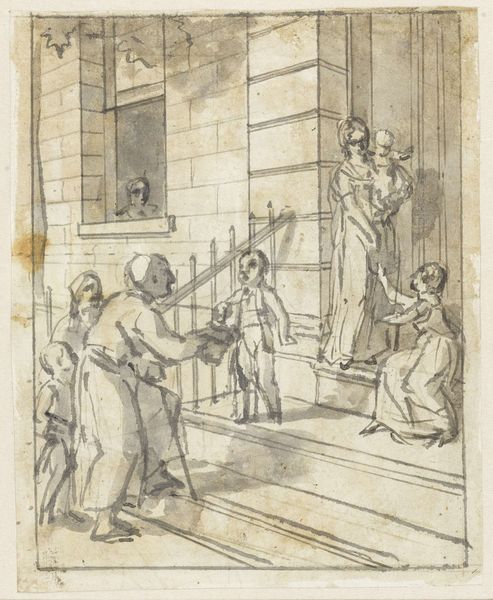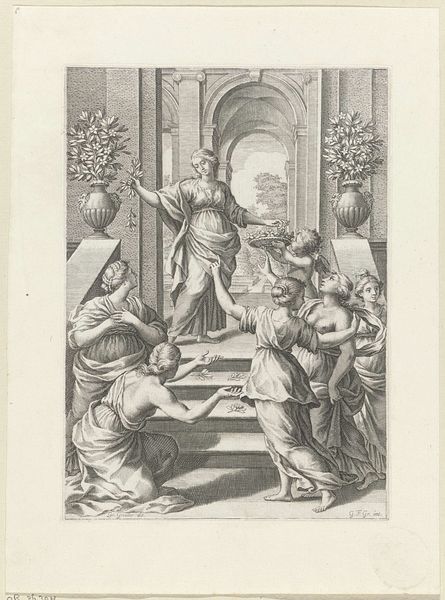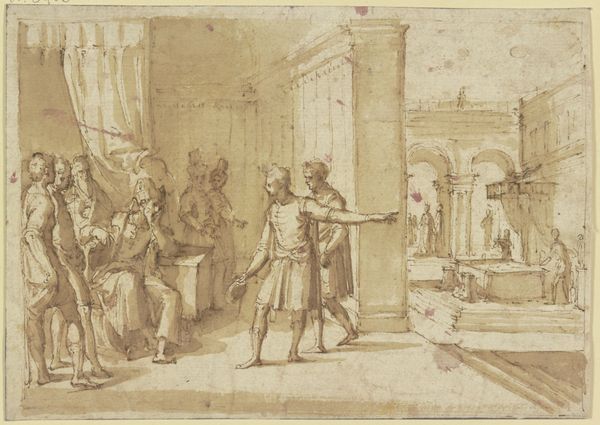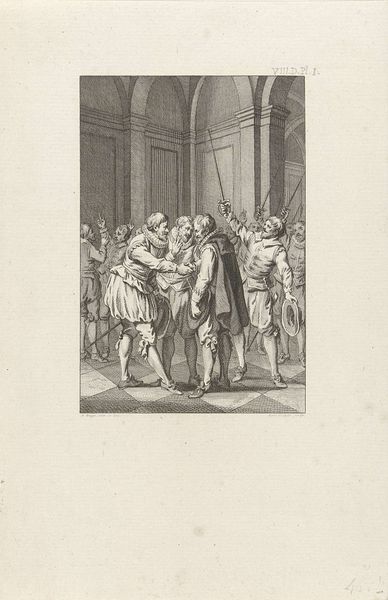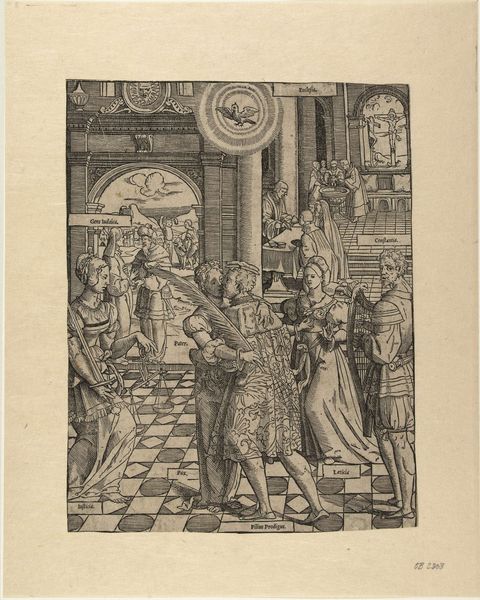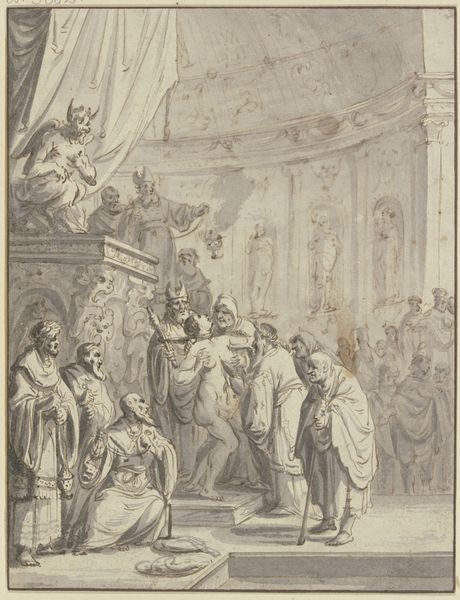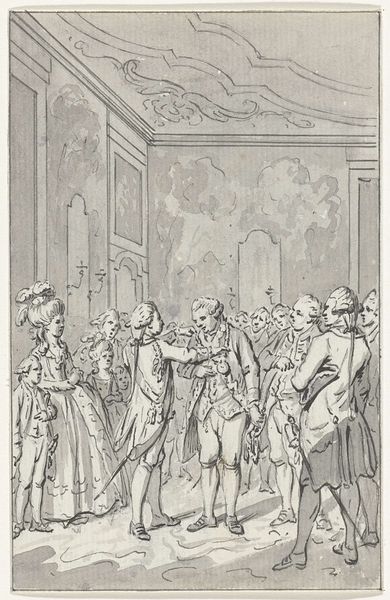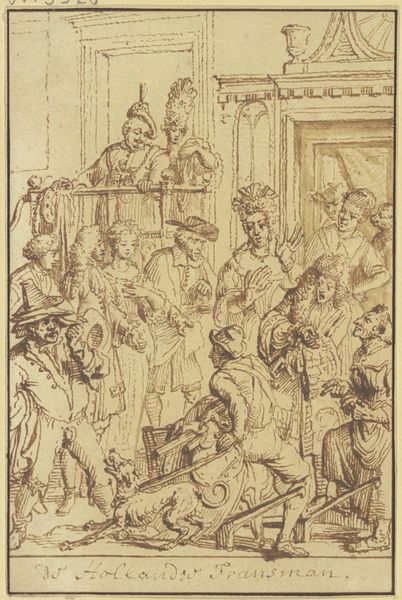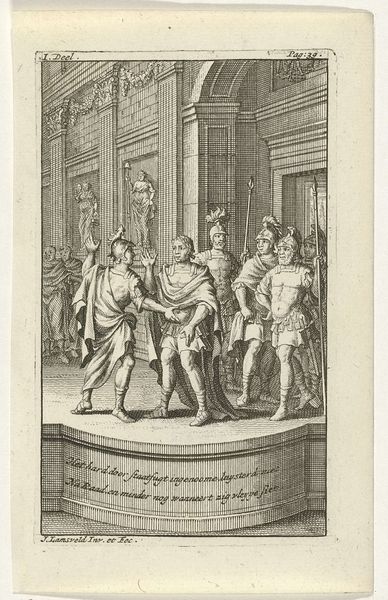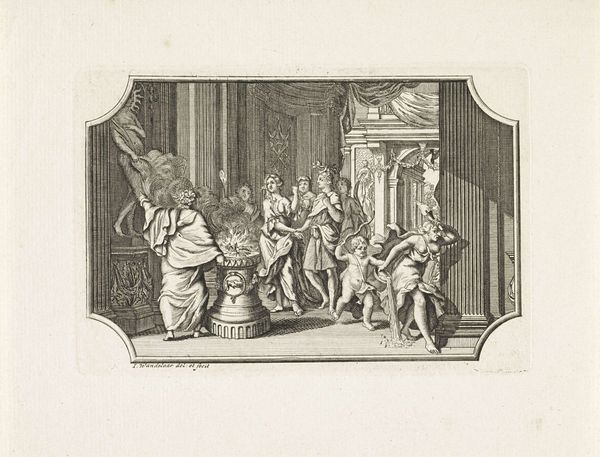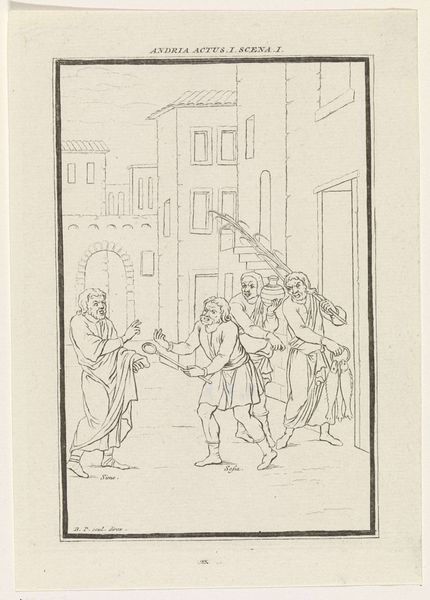
drawing, paper, ink
#
drawing
#
neoclacissism
#
aged paper
#
toned paper
#
narrative-art
#
sketch book
#
cartoon sketch
#
figuration
#
paper
#
personal sketchbook
#
ink
#
classicism
#
pen-ink sketch
#
sketchbook drawing
#
watercolour illustration
#
genre-painting
#
history-painting
#
storyboard and sketchbook work
#
sketchbook art
Dimensions: height 131 mm, width 83 mm
Copyright: Rijks Museum: Open Domain
Editor: So this is Abraham Delfos's drawing "Antipater," made sometime between 1741 and 1820, using ink on paper. The scene feels staged, theatrical even. What stands out to you when you look at it? Curator: What strikes me is how Delfos uses Neoclassicism, a style deeply embedded in ideas of civic virtue and moral clarity, to depict what seems like a very fraught scene. The very staging you mentioned, reminiscent of theatre, highlights the performative nature of power and justice, wouldn't you agree? Editor: I see that, yes! Everyone seems to be playing a role. It makes me wonder what story is being depicted here? Curator: Exactly! Think about the narratives that were popular during this time. History paintings often served to legitimize power structures. "Antipater" might be referencing a historical event used to reinforce societal norms or, perhaps more critically, to question them. The composition emphasizes hierarchy, with Antipater as the clear focal point. Who do you think has the power? Who is depicted as vulnerable? Editor: Definitely Antipater has all the power, and I see that all the characters in this work reflect gender norms that feel oppressive. So, are you suggesting that Delfos may be using classical aesthetics to critique the very power structures they often glorified? Curator: Precisely. Consider how Enlightenment ideals were often at odds with the social realities of the time. Art became a space where these tensions could be explored. What I find interesting here, as well, is how classical style informed power structures of the day; how gender, for instance, might shape and be shaped by the legal apparatus. Editor: That's fascinating. I hadn't considered how much the artistic style contributes to this sense of staged critique, but it does feel like Delfos is doing much more than illustrating a story. Curator: Right! We're not just seeing a historical scene, but also an early commentary on justice, performance, and social roles. What a subtle subversion, indeed! Editor: I'm starting to think about the stories behind this drawing beyond the narrative. There is also a reflection on its historical context and potential messages on justice and society.
Comments
No comments
Be the first to comment and join the conversation on the ultimate creative platform.
